Living with the classical chairs of the 20th century means using everyday pieces of furniture which have stood the test of time and fashion. Some of these chairs have become cornerstones of design development and are known as classic examples of the Modern style. The chair designs which have been given this status are the ones which visually or associatively represent the best of their time.
Praise for the manufacturers
It is not only the designers who can take credit for this status of classical furniture pieces, manufacturers also deserve praise.
Leading furniture companies of the 20th century such as Knoll, Artek, Vitra and Cassina took care not to change the designer's intentions and worked closely with the designer’s initial idea. This meant that they had to control the production of every detail precisely.
A unique presence
The chair is a piece of furniture which has a unique presence, even if it stays unused in any place in the room. It characterises not only its functionality, it also contributes to a furnishing harmony in combination with other decorative styles.
A definition for a chair given by one of the best known designers of the past century, Le Corbusier, says, "This is an object to sit on it, a sitting machine". According to this definition, the chair must be comfortable, supporting the body in several positions, if possible.
Manufacturer's considerations, on the other hand, are practical. The chair must be:
- Easy to produce
- Economical with the materials used
- Affordable

Paimio Chair (Alvar Aalto) - influenced by the popular design of chairs at the time using steel pipes. The seat and the back are formed from a single piece of laminated multilayer wood which is set in a birch frame.
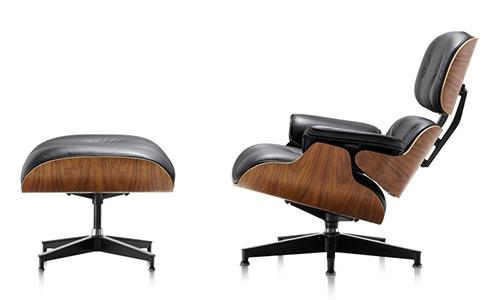
Lounge chair and Ottoman (Charles Eames) – the chair has three wooden shells made from multilayer wood covered with a veneer of palisander. The rotating stand is made of aluminium. The chair is covered with soft leather cushions filled with foam and fluff. The luxurious material and comfort of this chair merge office functionality with everyday comfort.
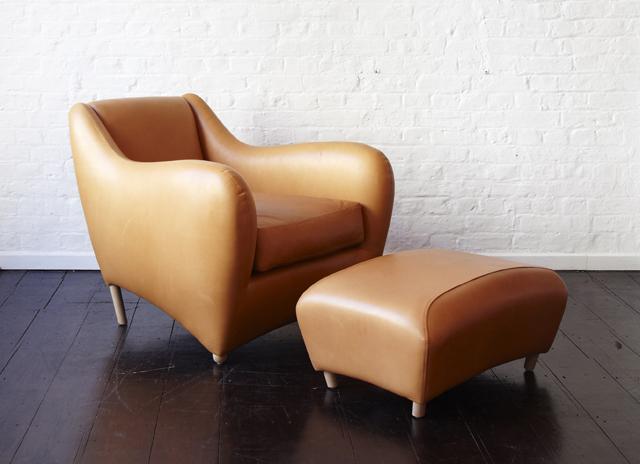
Balzac armchair (Matthew Hilton) – the rounded shape of the chair is due to the designer’s belief that people prefer to sprawl while reading or watching TV instead of sitting upright. His idea was to create a modern version of the office chair.
Experimenting with design
In the second half of the 20th century, the chair became a subject of intense experimentation. The reason for this was due to the continuous development of new materials and manufacturing technologies. Designers all over the world started to adopt various approaches to creating the shape of a chair.
The credo "the form follows the function" was established early during the Modern style. "To recognize the need", said the famous American designer Charles Eames, "is the first prerequisite in design".
Designers, at that time, created furniture for sitting on which fulfilled their functional purpose by trying, not always successfully, to use new materials and manufacturing techniques developed by the industry. These experiments included using variations of:
- Stainless steel tubes
- Glass
- Bended multilayer wood or leather
- Moulded polypropylene
- Plastic shapes
It seemed that every new material produced inspired designers to create a new type of chair.
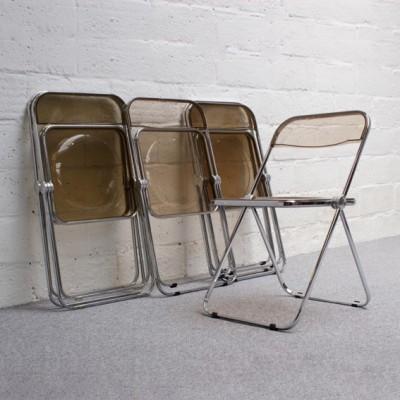
Plia chair (Giancarlo Piretti) - a great example of deliberate design, simplicity and transparency. The form is the same as the traditional wooden chair but the modern material offers an elegant, unobtrusive solution.
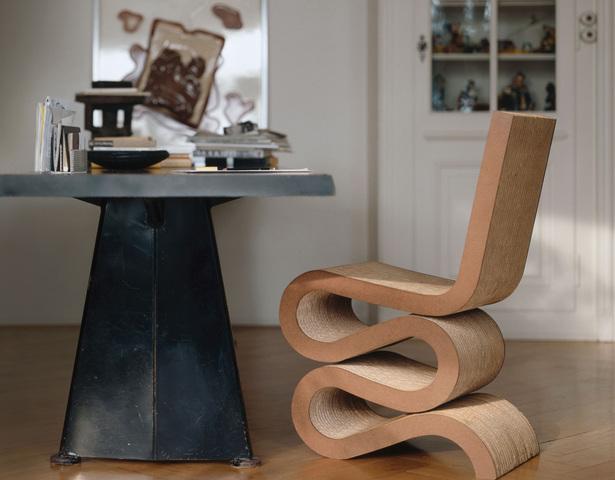
Wiggle side chair (Frank Gehry) - entirely constructed from the modern and affordable waste material cardboard. It is used in thick layers and glued together. The design allows a free, highly impressive layout and low production cost.
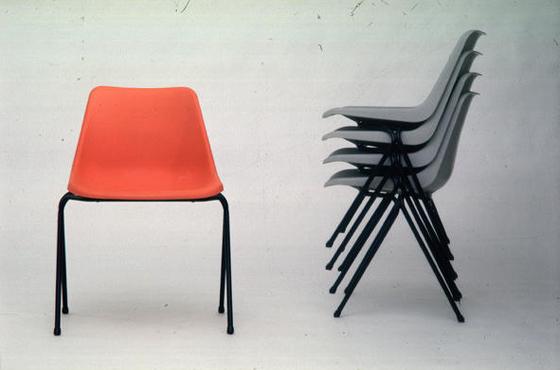
Polypropylene chair (Robin Day) – fondly known as the “polyprop”, it is extremely popular and repeatedly copied. The stacking chair is easy to manufacture and is very cost effective.
Expressing power and craftmanship
In most cases, chairs are evaluated on their functionality. The throne, as well as the bench are "sitting machines" according to Le Corbusier, but their shapes attach a different meaning. A chair can be an expression of power, indicating a leading position, but more often, people understand a chair as a decoration; an expression of an artistic sense.
Going back centuries, chairs have been created as decorative pieces. Whether they are decorated with woodcarving, incrustations, paint or with valuable materials, they have the ability to demonstrate master workmanship. A chair can be like a sculpture using the simplest shape. For example, the sensitive snake-like curves of the S-chair by Tom Dixon reveal the designer's personal interest in sculpture.
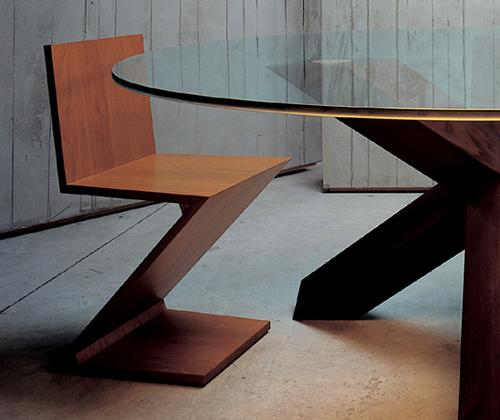
Zig Zag chair (Gerrit Rietveld) – the simple design of the chair is purely abstract. The idea came from the designer’s desire to make a chair from one piece of wood.
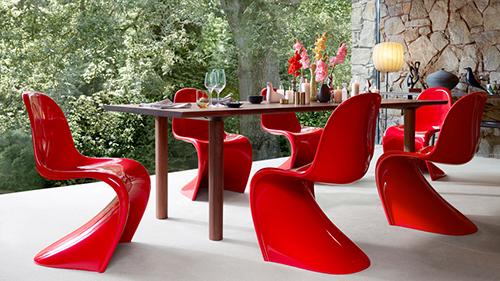
Panton chair (Verner Panton) – made using plastic moulding reinforced with fiberglass polystyrene. The curve of its lines and the glossy finish add luxury to the chair.
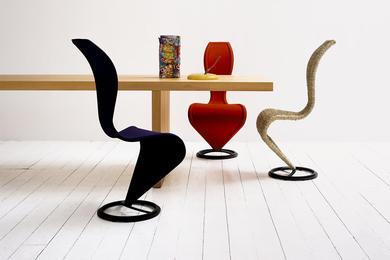
S-chair (Tom Dixon) – designed not according to drawings but through the process of creating a sculpture.
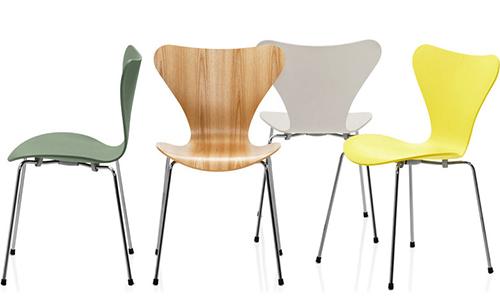
Series 7 chair (Arne Jacobsen) – the seat and the backrest are made of one piece of laminated wood which facilitates mass production. The legs are made from chrome steel tubes.
Where architecture meets chair design
"When designing a chair, we create a miniature of a society, of a town", shares the English architect Peter Smithson. The enthusiasm for chair designing is due to the variety of possibilities and the opportunity for the designer to express their basic concept for beauty. It is understandable, therefore, why many architects are often involved in furniture design. Following the lead of Victor Horda, architects often discover that chair design offers them an additional form to express their concepts which they may nor may be able to use in building designs.
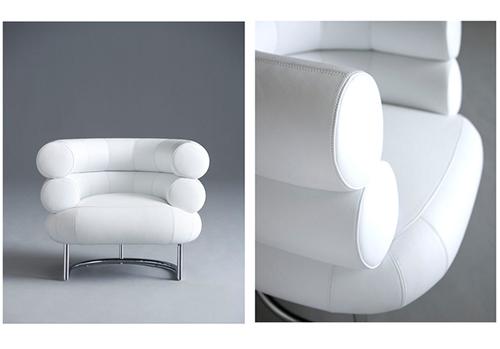
Bibendum armchair (Eileen Gray) – adopting a classic art deco style, this chair is a combination of luxurious materials and clean and stylish aesthetics of the industrial era.
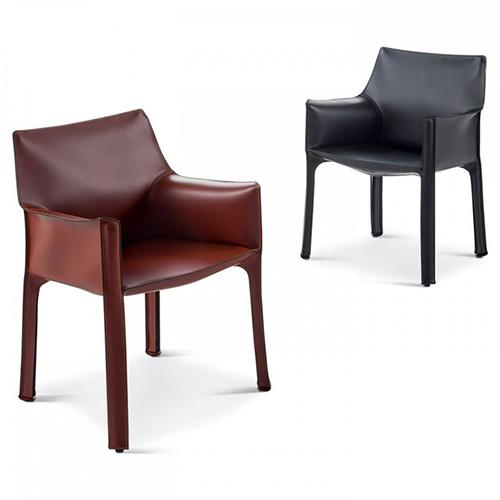
Cab chair (Mario Bellini) – the frame of the chair is made of lacquered welded steel and a coating of shiny leather that is coarsely stitched. The visible seams emphasise the artisanal process of its preparation.
Originality comes in many forms
A chair doesn’t always have to be a technical innovation in order to be original. Some examples include the ones listed below.
- Eero Saarinen’s armchair, the "Egg", which embraces the body as a protective shell, doesn’t use modern material nor manufacturing techniques but yet it manages to reach an almost poetic shape.
- The minimalist "Ply chair" by Jasper Morrison represents not only a remodelling of traditional forms, it also offers something new with its visual "coldness”.
- Harry Bertoia’s "Diamant" armchair made of welded, inter-weaved stainless steel bars demonstrates how light and transparent a chair can be.
- The simple design of Alvar Aalto’s stool, produced using Aalto’s improved mounting technology, is simply the "right" stool and it seems that nothing can be improved.
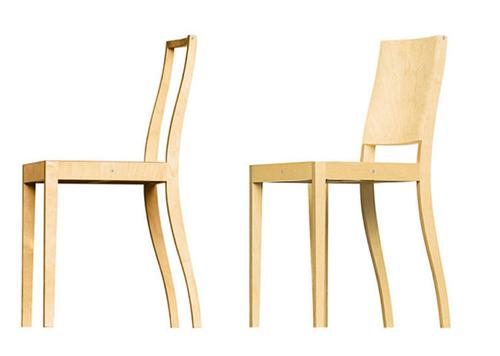
Ply-chair (Jasper Morrison) - made of laminated wood, it is cheap, easy to handle and pleasant to the touch. At first the seat seems hard but the elasticity and stability of the material make it comfortable.
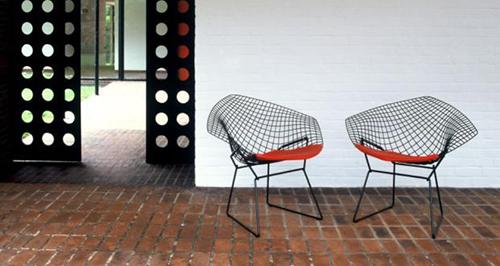
Diamond chair (Harry Bertoia) - the metal frame is welded and uses polished steel wire.
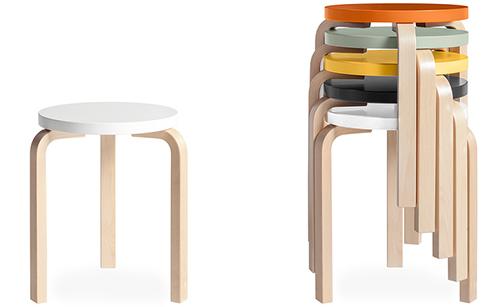
Stool 60 (Alvaro Aalto) – the key element is the L-shaped legs made from bent layered wood. The shape allows easy and profitable production.
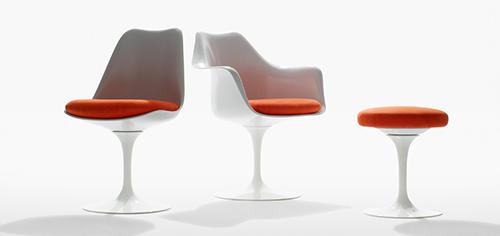
Tulip chair (Eero Saarinen) – it consists of two main parts, a curved glass fiberglass seat worn by a cast aluminium plinth.
Using modern techniques to improve living conditions
The designers Marcel Breuer, Mart Stam and Mies van der Rohe were all convinced that modern techniques in industrial manufacturing would enable the living conditions for all people to improve.
Each of these designers is most famously known for their use of the tubular steel frame. It is still not clear who was the first of these designers to develop this idea as each produced examples independently of one another.
The tubular steel frame became the most used material in the transitional period before the industrial manufacture of furniture.
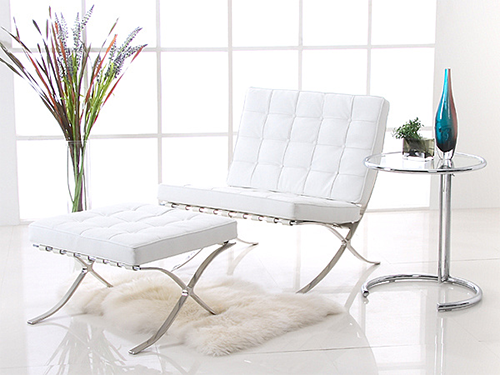
Barcelona chair (Mies Van der Rohe) – inspired by the design of the classic folding chair, the x-shaped frame is made of polished stainless steel. The cushions of the seat and backrest can be removed.
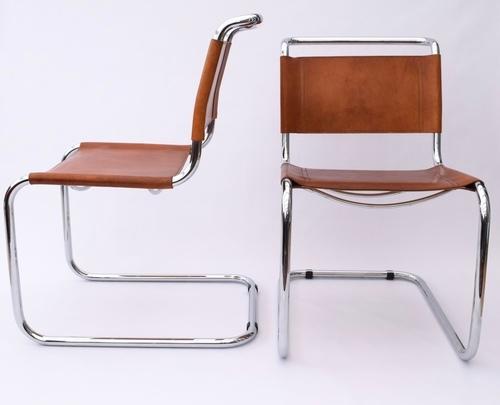
Mart Stam chair – experimenting with gas pipes, this chair no longer rests on four legs.
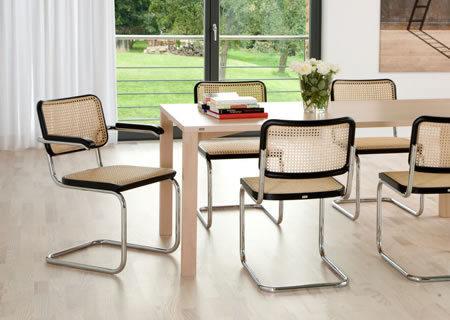
Cesca (Marcel Breuer) – the handwoven cane seat and back are stretched by the bent frame of beech material.
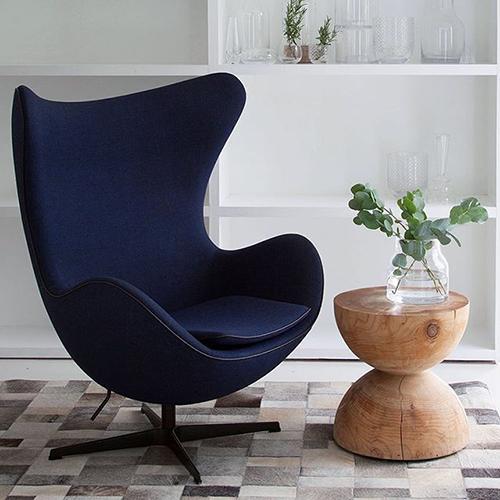
Egg chair (Eero Saarinen) - the seat is formed from fiberglass and star-lying legs are made of cast aluminium. The filling consists of foam covered with leather, vinyl or cloth in bright clean colours.
Designs to live with
These classical chairs are those pieces of furniture design which future generations would like to have and to use. This means that they meet both aesthetical and functional needs. Some of these chairs have sold in their millions and are still in furniture shops today. They offer more than a seat; they contribute to the right posture even when they do not embrace the whole body. They are not simply items which serve a purpose for a short time, rather they are classical chairs which we can live with and which live on.

Comments
I find this blog very informative, keep up the good work.